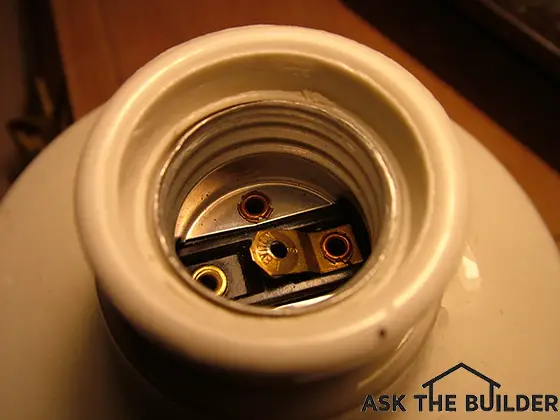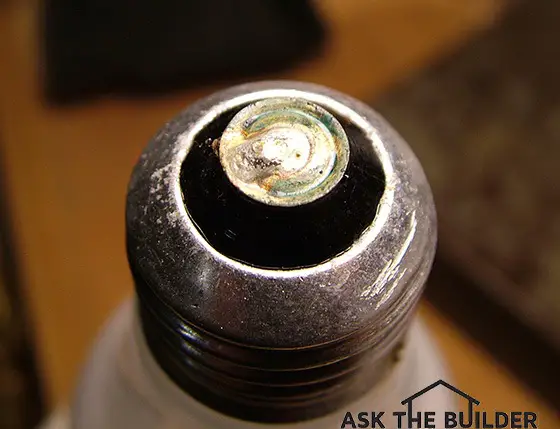Light Bulbs Burning Out Fast
Light Bulbs Burning Out Fast TIPS
- Turn off circuit breaker to lights
- Remove bulb from socket
- Look at brass tab at base of socket - it will be flat or nearly flat
- Use needle-nose pliers to pull tab up carefully so it's at 30-degree angle CLICK HERE for BEST pliers.
- CLICK HERE to Get Tim's FREE & FUNNY Newsletter!
DEAR TIM: Four of the six bulbs in the recessed lighting in our kitchen ceiling keep burning out. I just replaced one and it burned out in an hour. I am using 65-watt bulbs. Our house is only three-years old. Are the bulbs the wrong size? Is there a problem with the wiring? Cory Dixson, El Dorado Hills, CA
DEAR CORY: The problem with the premature failure of the light bulbs has nothing to do with the wattage or the wiring. My first guess is that it can be traced to the person who has installed the light bulbs or previous owners of your home. I think they are twisting them into the socket too tightly.
The flickering of light bulbs in lamps and fixtures can also be caused by bulbs that have been installed too tightly into light fixtures.
Brass Tab

Look right in the center of the photo. You can clearly see the brass tab and if you look closely you can see it is raised up off the bottom of the socket. © 2017 Tim Carter
At the base of light fixture sockets you will find a brass tab. This tab is bent at an angle when the fixtures are new and will spring back and forth if depressed slightly. Do not ever stick your finger in the socket to test this, as you can get shocked if the power is on to the fixture.
Take several new light bulbs and inspect the base of each one. You will quickly notice that the bottom of most light bulbs has a small droplet of solder in the center of the base. More importantly the size of this drop of solder is not consistent from light bulb to light bulb. It is close in size, but not always the same size or height.
Free & Fast BIDS
Arcing Melts Bulb Bottom
If the brass tab at the base of the socket does not make firm contact with the bottom of the light bulb, a small electrical arc, or spark, can happen that starts to melt the solder. Over a period of time, the solder can deform and the gap between the solder and the brass tab gets larger.
In some cases, this arcing can create a hole in the base of the bulb causing air to enter the bulb. When this happens, the filament burns out rapidly.
When this happens, the electrical contact between the brass tab and the solder is broken and the light bulb acts as if it has been turned off when in fact the switch is on and the bulb is still in working condition.

Pull Up The Tab
To prevent this arcing you must be sure the brass tab is always at about a 30-degree angle inside the bottom of the socket. People who twist bulbs in tightly will depress and flatten the tab so it does not spring back when a bulb is replaced.
Turn OFF Breaker
If you discover the tab is flattened, then you must turn off the power to the lights, and as an additional safety safety measure, turn off the circuit breaker to the lights.
Use a needle-nose pliers and carefully grasp the sides of the brass tab near the tip of the tab, not where it bends down into the underside of the socket. Slowly pull it up so the end of the tab is about one quarter inch off the base of the socket.

These needle-nose pliers will work great to pull back up the brass tab. CLICK THE IMAGE TO BUY THESE GREAT PLIERS.
When you install a bulb always do so with the power on and the light switch on. As soon as the bulb comes on, only continue to turn the bulb one-eighth of a turn. If you screw the bulb in too tightly, you will once again flatten the brass tab.
You need an excellent pair of needle-nose pliers for this repair. This is a great one. CLICK HERE to BUY it now.
Afraid of electric fires?
Column EM0017
34 Responses to Light Bulbs Burning Out Fast